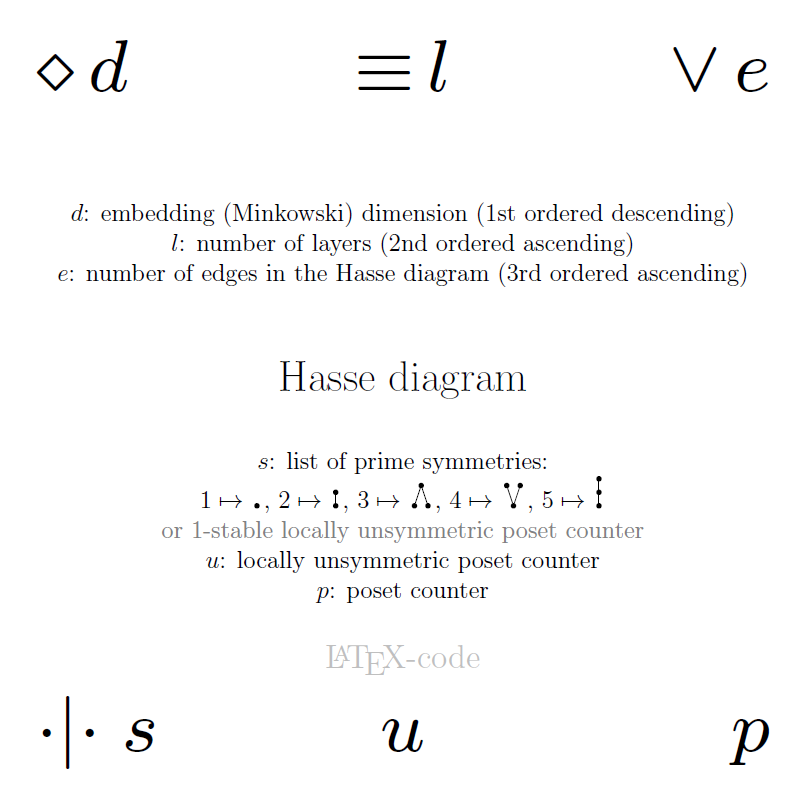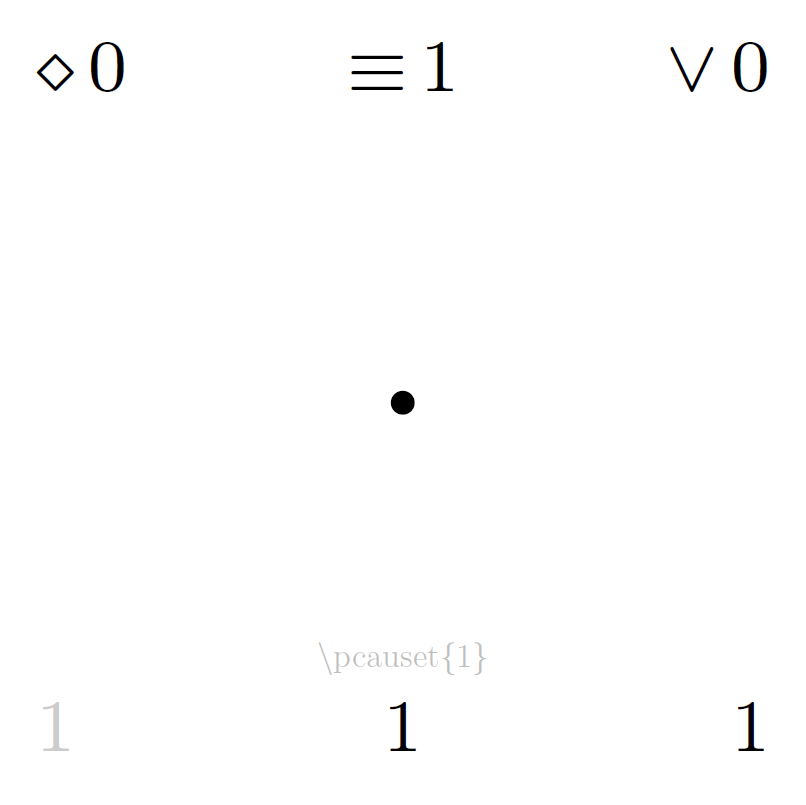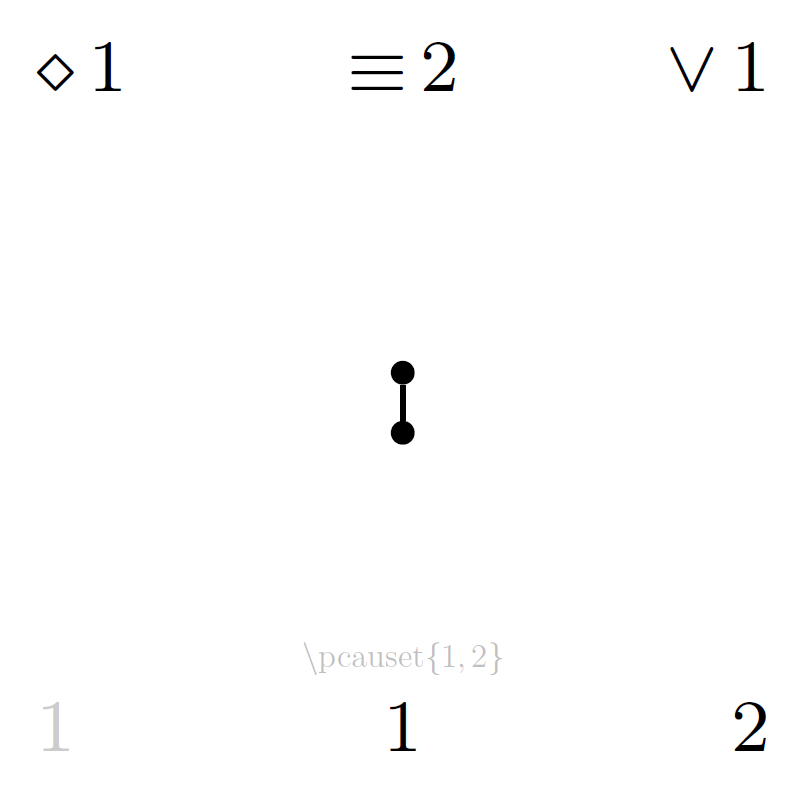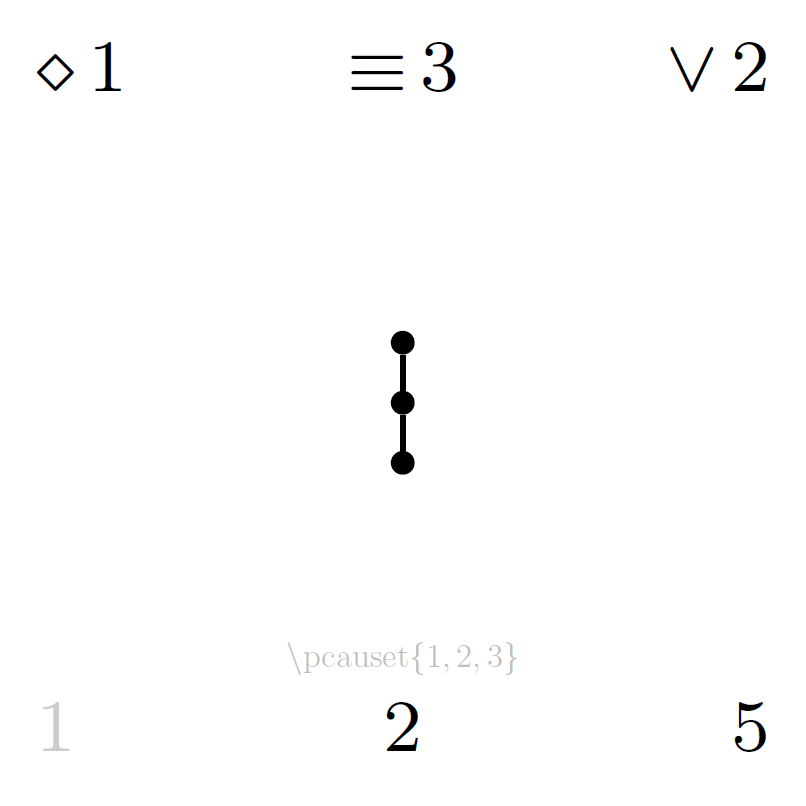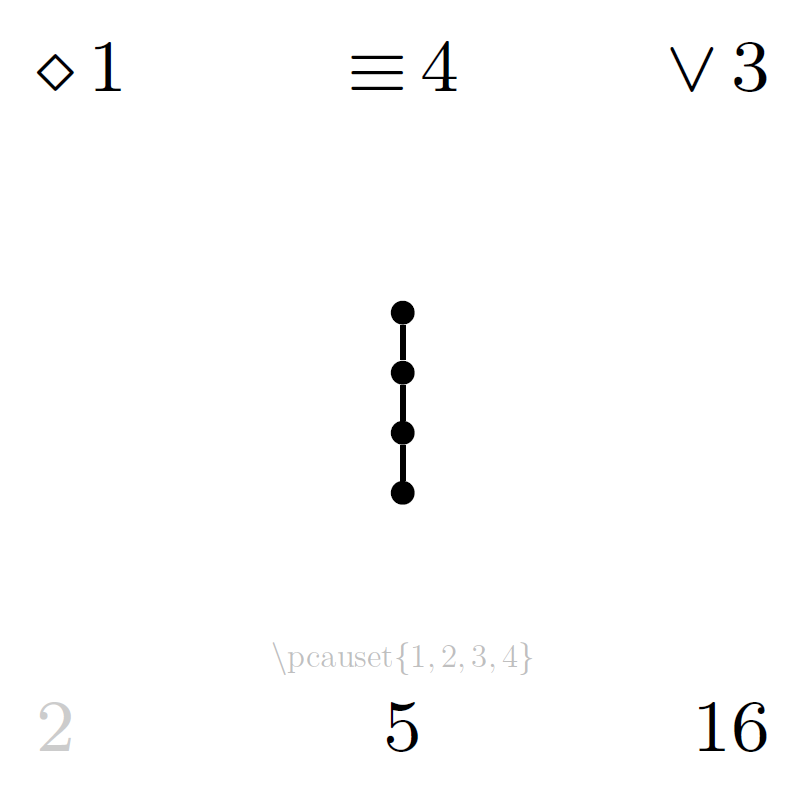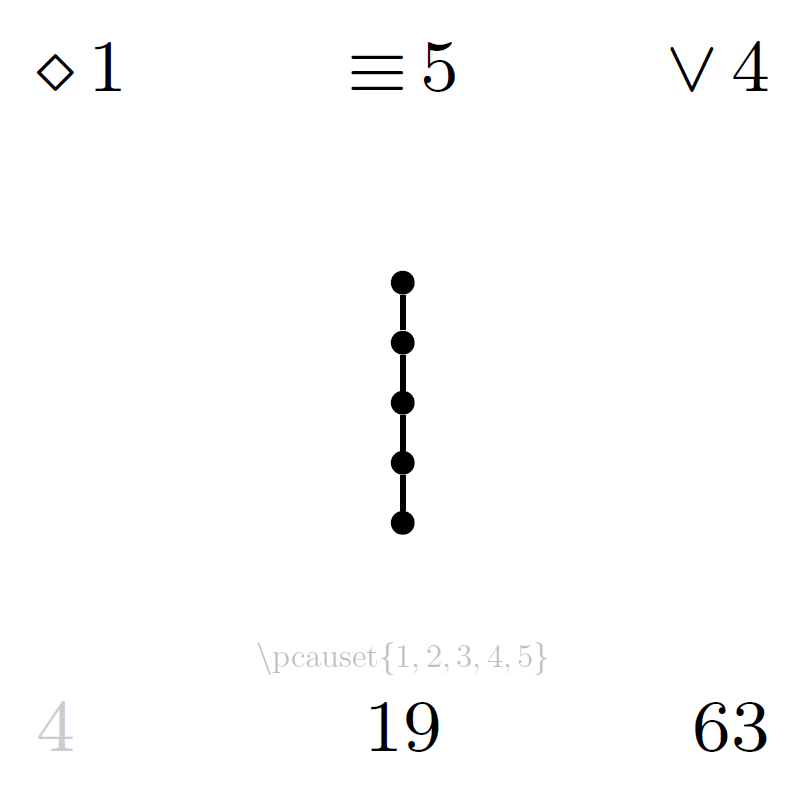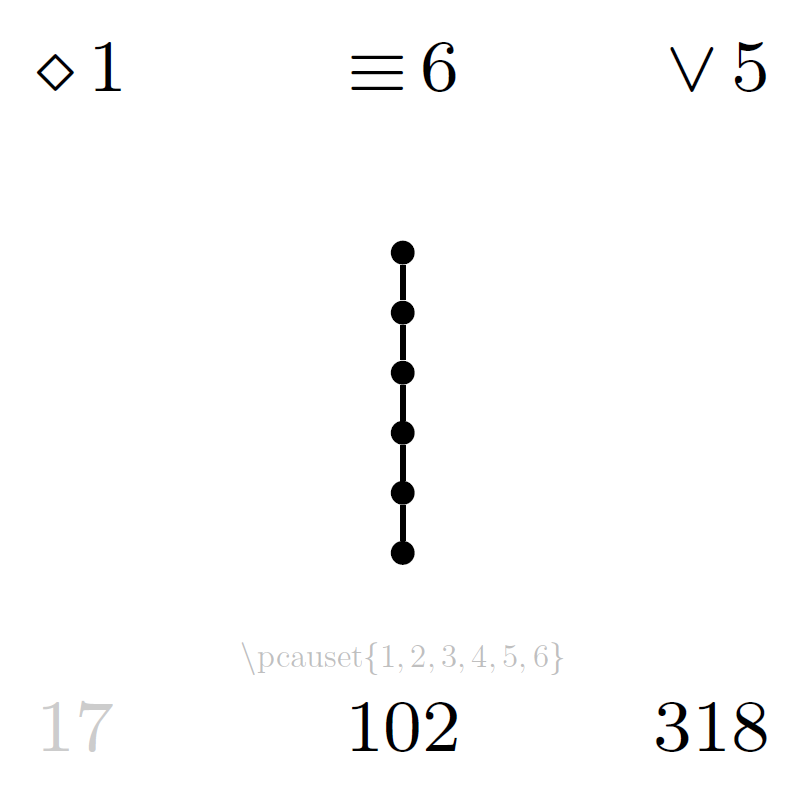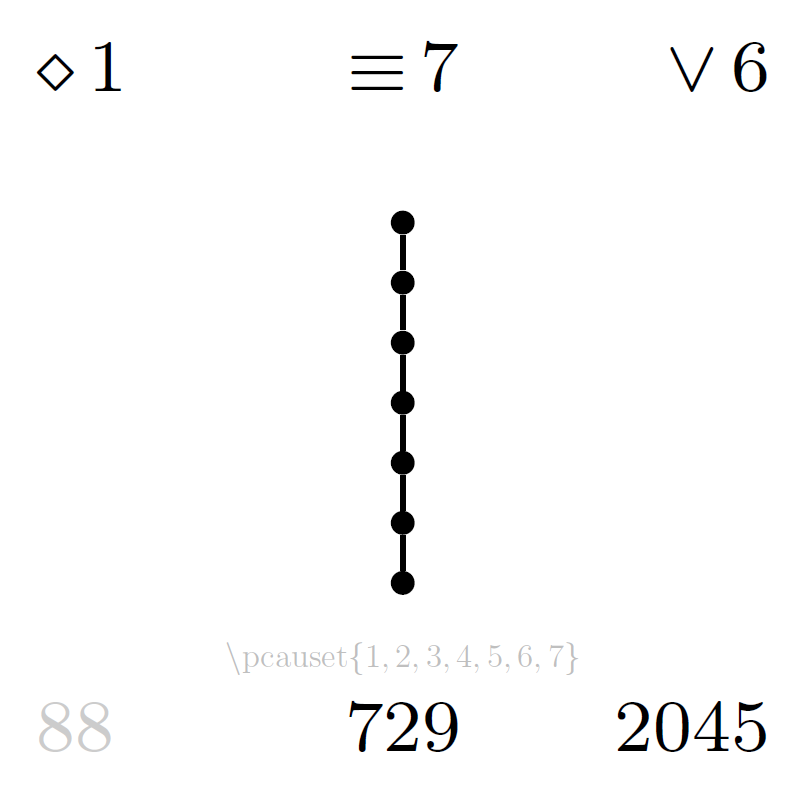Hasse diagrams
Tools to create and type-set diagrams of partially ordered sets and causal sets
A Hasse diagram is a graphical representation of a partially ordered set (a set with a transitive, reflexive, antisymmetric ordering), where all elements are drawn as vertices and edges (directed towards the top of the page) connect pairs of vertices x and y if x < y and there is no other element z such that x < z < y. Partially ordered sets (or posets for short) appear as an abstract structure in many areas of mathematics, though Hasse diagrams are mostly useful for finite posets.
In gravitational physics, a spacetime manifold is a poset where the ordering is given by its causal structure that partially orders the spacetime points (events). Their discrete analogous are lattices and causal sets (or causets for short), which are locally finite posets, so every set of elements z between a pair of events x < z < y is finite and thus representable with a Hasse diagram. Causal sets are the central objects in an approach to quantum gravity, where a spacetime manifold is considered to be the macroscopic counterpart to ensembles of causal sets at a microscopic level.
Below I give a brief introduction to some tools to create and type-set Hasse diagrams for posets and causal sets.
LaTeX package: causets
The LaTeX package causets (Minz, 2020) provides macros to type-set Hasse diagrams of partially ordered sets (posets) and causal sets (causets), and use them in graphics. It is available through CTAN, but if you have a recent full LaTeX installation, then it might be already installed on your system. For example, it is ready to use on Overleaf. Just load the package with
\usepackage{causets}
The package provides three main commands to show a diagram in text and math mode. The macros are
-
\pcauset{..,i,..}to insert a Hasse diagram of a 2D-order using a permutation of consecutive integers, -
\rcauset{..,i,..}{..,i/j,..}to print a diagram based on a permutation as before (first argument) but with those linksi/jthat listed in the second argument removed, -
\causet{..,i,..}{..,i/j,..}to place a diagram where the vertices are arranged according to a 2D-order permutation (first argument) but the links are added only between the element pairsi/jgiven in the second argument.
For example, use
\pcauset{1,2,...,7} % to insert a 7-chain
\pcauset{7,6,...,1} % to insert a 7-antichain
The diagrams are type-set with TikZ, so that there are plenty of additional options to label, restyle, and combine the graphics with other TikZ code. You may find more information in the package manual via CTAN and the package repository on GitHub.
Online editor: PrOSET
The macros of the LaTeX package are built on integer permutations that determine the positions of the elements in the diagrams. To find a suitable permutation for a poset diagram while getting a live preview, I have developed the ‘PrOSET editor’:
Catalogue of finite posets
The following catalogue lists diagrams for all posets up to cardinality 6. The total number of distinct partial orders on sets of n elements (corresponding to the total page number of each part of the catalogue) is recorded in the OEIS as sequence A000112. All diagrams in the catalogue below are generated with the LaTeX package and the symmetry properties annotated in the catalogue are defined in (Minz, 2024).
Each file of the catalogue contains all partial orders on a given number of elements, one poset per page including the annotated properties:
- upper left
d: dimension of the order (as primary page order, descending) - upper centre
l: number of layers (as secondary page order, ascending) - upper right
e: number of edges in the diagram (as tertiary page order, ascending) - centre: Hasse diagram
- lower left
s: prime symmetry (1: singleton-symmetry, 2: 2-chain-symmetry, 3: wedge-symmetry, 4: vee-symmetry, 5: 3-chain-symmetry), or 1-stable locally unsymmetric poset counter - lower centre
u: locally unsymmetric poset counter - lower right
p: poset counter
In case you spot an error in the catalogue, please get in contact with me.
